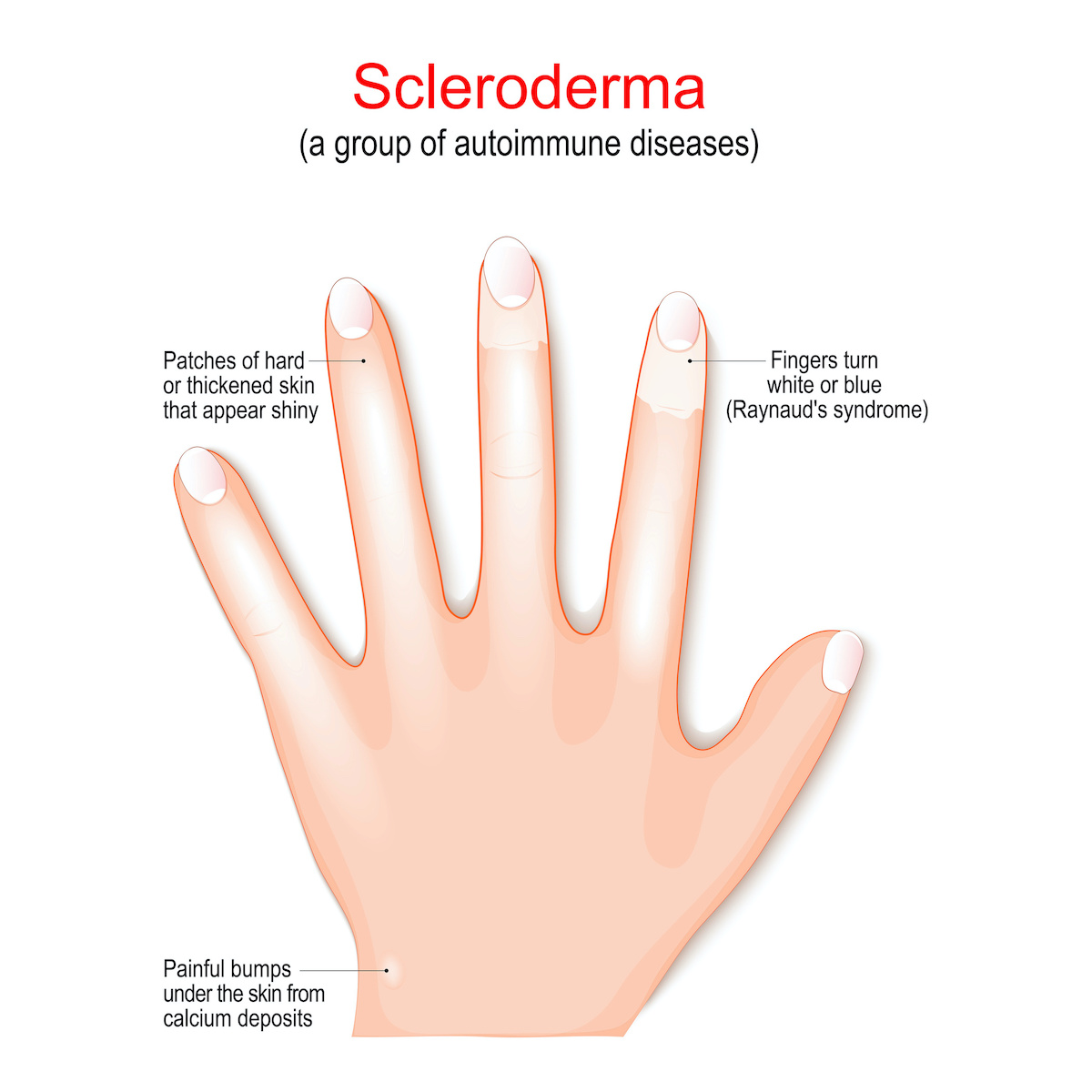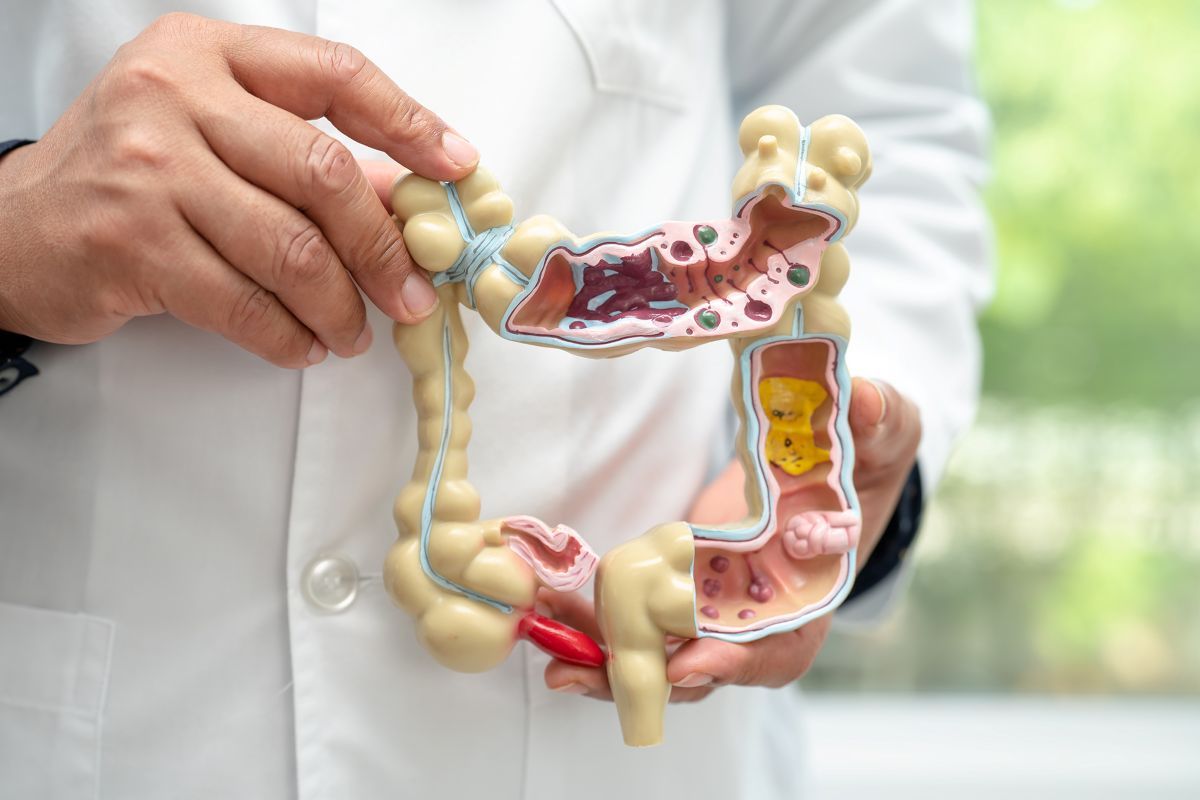
Systemic scleroderma is a chronic autoimmune disease that affects connective tissue (skin, tendons, joints, ligaments, blood vessels and muscles) and internal organs.
Scleroderma (systemic sclerosis) is a rare disease. About 10-20 new cases per 1 million people are diagnosed each year.
People of all races and ethnic backgrounds get scleroderma, but about 75 percent of people with the disease are women. It can occur at any age. However, scleroderma most commonly begins when people are between the ages of 30 and 60 years old.
While the cause of scleroderma is unknown, we do know that it is an autoimmune disease. This means the body’s natural immune system does not behave normally. Instead of serving to fight off infections from bacteria, viruses and the like, the immune system of a person with scleroderma attacks its own body. This damages blood vessels.
The body’s response to damage to its own blood vessels is to make specific proteins, called collagen. The collagen repairs the damage by forming diffuse scars (fibrosis) throughout the blood vessels. The excess collagen can deposit in the skin, in turn causing the many skin changes seen with scleroderma. In addition, the fibrosis (growth of scar tissue) of the blood vessels leads to involvement of many of the internal organs.
Twenty-five to sixty percent of people with scleroderma are often diagnosed with ILD (Interstitial lung disease). This number is higher when more of the skin is affected. Ten to fifteen percent of people with scleroderma may be diagnosed with pulmonary hypertension. This is an increase in the blood pressure in the lungs.
Because scleroderma primarily targets the skin, its most obvious symptoms show themselves as skin problems. Due to the nature of the disease, however, which can also affect internal organs, other symptoms may occur.
Common skin symptoms of scleroderma include:
• Thickening, hardening and tightness
• Swelling of hands and toes
• Hair loss in involved skin
• Sores over fingertips
• Generalized itching
• Color changes of hands and feet with cold exposure (known as Raynaud’s)
Other common symptoms of scleroderma include:
• Fatigue
• Arthritis
• Muscle pain and weakness
• Dryness of the eyes and mouth
• Heartburn, bloating and other digestive symptoms
• Cough
• High blood pressure (known as hypertension)
It is often difficult to diagnose scleroderma (systemic sclerosis). A specialist in autoimmune diseases is often required to establish the diagnosis. This specialist is a rheumatologist. The diagnosis of scleroderma is made based on the careful analysis of many factors.
It is important to identify early and treat the organs affected with scleroderma. A thorough history and physical examination are essential. There are also certain laboratory studies that can be helpful when considering the diagnosis. These may include specific blood and urine tests. Other tests, including specialized lung and heart evaluations, are needed to determine if there is any internal organ involvement from scleroderma.
It is important to note that a diagnosis cannot be made based on any specific blood test alone.
It is important to recognize that there is no cure for scleroderma. In addition, because it is a chronic disease, people often require medical therapy for many years to keep scleroderma under control.
Goals of therapy vary for each person because the various organs involved in a given person with scleroderma guide treatment. There are a number of effective organ-specific treatments available for people with scleroderma. Combinations of anti-inflammatory and immunosuppressive medicines are often needed. These manage the underlying problems with the immune system. Various other medications are often needed to control the skin and internal organ problems associated with this disease. In particular, chemotherapy may be required to control underlying lung problems. If a person is diagnosed with ILD or pulmonary hypertension,specific treatment is recommended to treat these.
In addition to medication therapy, treatment of scleroderma may include:
• Partnering with your health care provider to formulate a comprehensive treatment plan
• Learning more about scleroderma
• Living a full life that includes adopting a healthy lifestyle involving
–Regular exercise
–Healthy eating
–Rest
–Support from others
• Avoiding infections
• Taking medications as prescribed
Many people benefit from physical therapy and rehabilitation. Under the guidance of rehabilitation therapists, people with scleroderma often learn how to appropriately rest, exercise, strengthen and maintain joint and muscle function.
Source: https://www.nationaljewish.org/conditions/scleroderma-systemic-sclerosis-ssc;
This information was reviewed and approved by Dr. Fischer,
Mehrnaz Maleki Fischbach, MD (8/31/2019)












